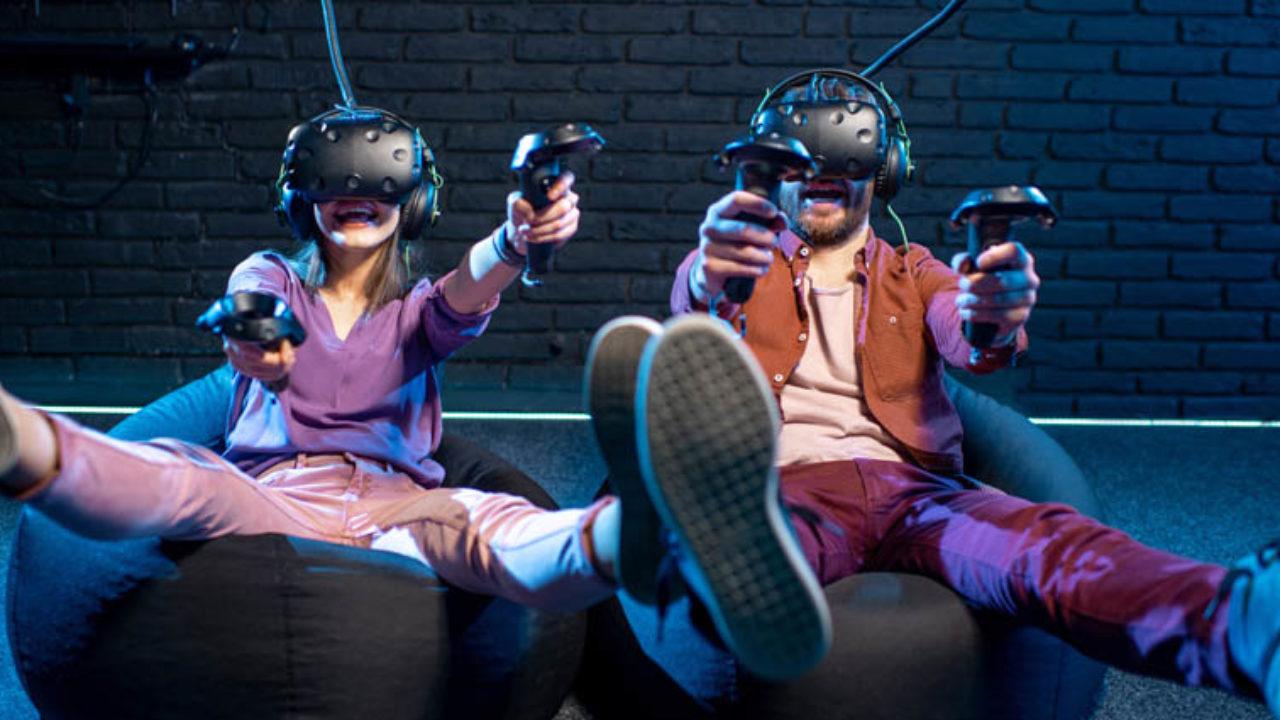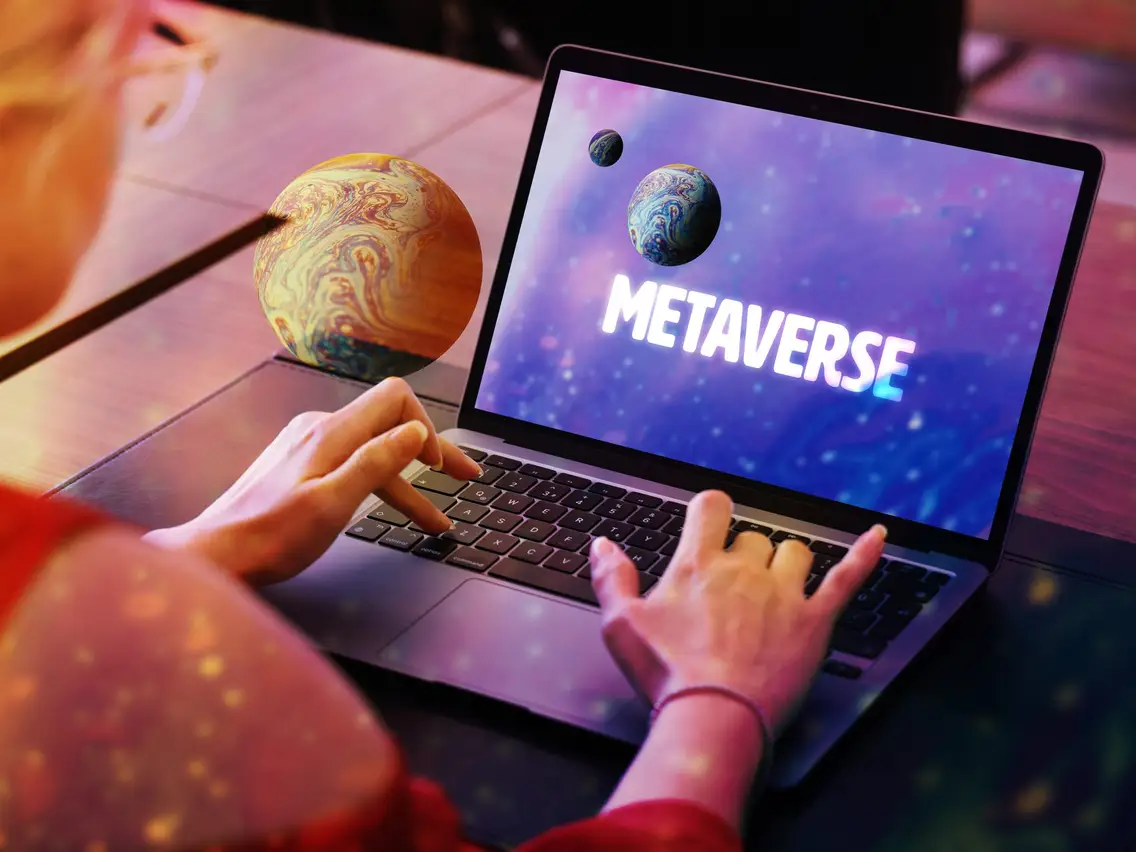The metaverse is a virtual space that connects several platforms, similar to how the internet connects various websites that offer access through a single browser.
- The metaverse will enable economics, digital identification, decentralized government, and other uses in addition to games and social media.
- Due to the apparent emphasis on 3D virtual reality, video games now provide the closest metaverse experience.
- Blockchain has various aspects that make the technology suited for the metaverse.
The physical, virtual, and financial worlds have grown more intertwined. The electronics used to manage lives provide people instant access to practically everything they want. The change has also affected the digital assets sector. NFTs, blockchain, games, and cryptocurrency payments no longer remain confined to crypto enthusiasts. They are all now freely accessible as part of a growing metaverse.
Read: The seven most important technologies driving the metaverse
Contextual definition of the metaverse
The metaverse is a 3D online virtual space that connects individuals in all aspects of their lives. The virtual space connects several platforms, similar to how the internet connects various websites that offer access through a single browser.
Neal Stephenson’s science-fiction classic Snow Crash introduced the concept. However, while the concept of a metaverse was formerly considered fiction, it now appears that it may become a reality in the future.
Augmented reality will power the metaverse, with each user managing a character or avatar. For example, one might hold a mixed reality conference in their virtual workplace using an Oculus VR headset, conclude work and relax in a blockchain-based game, and then manage their crypto portfolio and finances within the metaverse.
Some characteristics of the metaverse exist within virtual video game environments—workplace socializing tools such as Gather or games like Second Life. The town combines several aspects of our life into online environments. While not the metaverse, these applications are relatively close. The metaverse does not yet exist.
The metaverse will enable economics, digital identification, decentralized government, and other uses in addition to games and social media. Even today, user production and ownership of valuable goods and currencies contribute to developing a unified metaverse. All of these characteristics give blockchain the ability to fuel this future technology.
The link between the metaverse and video games
Due to the apparent emphasis on 3D virtual reality, video games now provide the closest metaverse experience. The relation is not only because both use 3D. Video games increasingly offer features and services that apply to various elements of human life. Roblox, a computer game, even provides virtual events such as concerts and gatherings. Players no longer only play the game; they utilize it for other tasks and aspects of their lives in “cyberspace.” For instance, 12.3 million Fortnite gamers participated in Travis Scott’s virtual in-game musical tour.

Crypto and the metaverse
Gaming provides the 3D outlook of the metaverse but does not satisfy all of the requirements for a virtual environment that can include all aspects of life. Crypto can provide the other critical components necessary, such as digital evidence of ownership, value transfer, governance, and accessibility. But what precisely do these terms mean?
If people work, interact, and even buy virtual objects in the metaverse in the future, they will need a safe mechanism to prove ownership. People must also feel secure when moving these commodities and money across the metaverse. Finally, since the metaverse will be such a big part of human lives, they will want to be a part of the decision-making process.
Some video games already have some rudimentary solutions, but many creators choose to employ crypto and blockchain as a superior choice. While video game creation is more controlled, blockchain enables a decentralized and transparent approach to dealing with the topics.
The video game industry also influences blockchain developers. GameFi and Decentralized Finance (DeFi) both use gamification. There appear to be enough parallels in the future for the two worlds to become even more interwoven. Blockchain has various aspects that make the technology suited for the metaverse.
Interoperability
The interoperability of diverse systems is constantly improving thanks to blockchain technology. Polkadot (DOT) and Avalanche (AVAX) projects enable the creation of unique blockchains that can communicate with one another. A single metaverse will be required to connect different initiatives for which blockchain technology provides answers.
Governance
Users should value the capacity to control the terms of their interactions with the metaverse. In real life, people may vote in corporations and pick governments and leaders. The metaverse will also require methods for implementing fair governance, and blockchain is currently a proven method.
Accessibility
On public blockchains, anybody from anywhere in the world may create a wallet. Unlike a bank account, no requirements exist to pay any money or submit any information. As a result, it is one of the most accessible methods of managing funds and online digital identity.
Read: South Africa dethrones Kenya in cryptocurrency ownership
Digital collectibility
One can prove that an object is unique and original just as they can prove who owns it. The proof remains critical for a metaverse that wants to include more real-life activities. People may use NFTs to construct unique items that cannot be replicated or fabricated. A blockchain can also reflect actual object ownership.
Digital proof of ownership
Anyone can instantaneously prove possession of an asset or an activity on the blockchain if you have a wallet with access to your private keys. To demonstrate responsibility, you might, for example, present an exact transcript of your transactions on the blockchain while at work. A wallet is one of the most secure and reliable ways to establish a digital identity and prove ownership.
The idea of a metaverse job
The metaverse will merge all elements of existence in one place. While many individuals now work at home, in the metaverse, one will be able to visit a 3D workplace and communicate with their colleagues’ avatars. One’s employment may also be metaverse connected and offer individuals revenue directly useable in the metaverse. In reality, these sorts of professions already exist comparably.
GameFi and play-to-earn models now provide stable revenue streams for individuals globally. These online professions are strong candidates for metaverse adoption in the future, as they indicate that individuals are keen to devote their time living and earning in virtual worlds. Play-to-earn games like Axie Infinity and Gods Unchained dont even feature 3D environments or avatars. However, it is the notion that they may be part of the metaverse as a method to generate money solely in the online world.

Examples of metaverse
While there is no single, linked metaverse, several platforms and initiatives are analogous to the metaverse. Generally, these include NFTs and other blockchain components.
Decentraland
Decentraland is a virtual realm that mixes social aspects with cryptocurrencies, NFTs, and virtual real estate. Furthermore, participants participate actively in the platform’s governance. NFTs, like those utilized in other blockchain games, are used to represent cosmetic items. These NFTs get utilized for LAND, which are 16×16 meter land parcels that players may buy in the game using the cryptocurrency MANA. All of these factors combine to form a complicated crypto-economy.
Axie Infinity
Axie Infinity is a play-to-earn game that allows users in developing nations to earn a constant income. A player can begin farming the Smooth Love Potion (SLP) token by purchasing or being given three Axies. Depending on how much they play and the market pricing, someone selling on the open market may profit between $200 and $1000 (USD).
While Axie Infinity does not provide a single 3D avatar or character, it allows users to work in a metaverse-like environment. A perfect example lies in the well-known stories of Filipinos adopting it as a potential substitute for full-time jobs or assistance.
SecondLive
SecondLive is a 3D virtual world in which users manage avatars for interacting, studying, and trade. There is also an NFT marketplace for trading collectibles in the project. As part of its first anniversary, SecondLive will host Binance Smart Chain’s Harvest Festival in September 2020. The virtual expo included many projects from the BSC ecosystem that people could interact with and explore.
Metaverse prospects
Facebook is one of the most vocal proponents of a united metaverse. Because of Facebook’s Diem stablecoin project, this is very intriguing for a crypto-powered metaverse. Mark Zuckerberg has clarified that he intends to employ a metaverse initiative to facilitate remote labour and provide financial prospects for individuals in developing nations. Because Facebook owns social media, communication, and crypto platforms, it has a solid start in merging all of these realms into one. Microsoft, Apple, and Google are other significant IT corporations aiming to build a metaverse.
The further synergy between NFT platforms and 3D virtual environments appears to be the next stage toward a crypto-powered metaverse. NFT holders may already sell their items from various sources on markets such as OpenSea and BakerySwap, but there is no widely used 3D platform for this. Blockchain developers may create popular metaverse-like programs with more natural users than a massive tech giant on a larger scale.
Read: Getting Started in Cryptocurrency Trading
